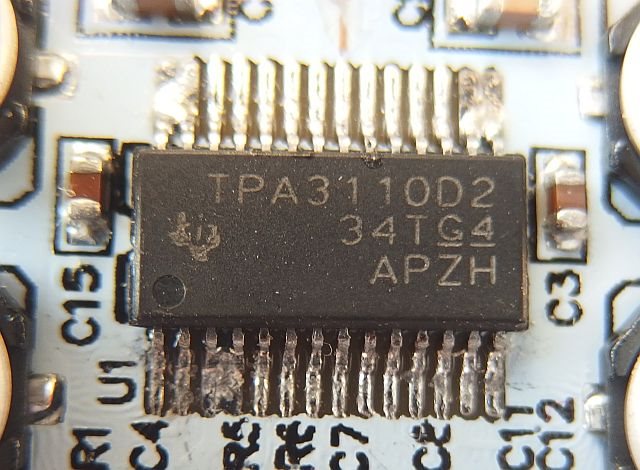Other Parts Discussed in Thread: TPA3111D1
Dear Support,
I am using the TPA3110D2 on a preassembled board that implements a configuration very similar to the datasheet example of single-ended input with PBTL output. The supply voltage is 24V, which I believe should be OK as the IC and board are rated for up to 26V.
I am seeing a fault where the device operates fine once only, then when power is removed and reapplied it no longer works (audio silent, low power dissipation). It seems that pin 7 (AVCC) now has low impedance to ground (internal IC failure) and this then causes high current to flow in the 10 ohm resistor feeding this pin from the 24V supply, causing failure of this resistor or high dissipation in the IC. The power supply is a commercial 24V SMPSU and checks out OK.
Is it safe to operate this IC at 24V? What could be the cause of such damage?
Thanks!
Trinity



